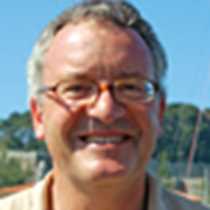Bornholm, Denmark
The Vikings had several different words to describe islands, a holm signifying difficulty in respect of bringing vessels ashore, often in the form of high cliffs and a shortage of inlets. In the case of Bornholm, strategically placed at the mouth of the inner Baltic, the best harbor was situated at a short distance from the main island itself in the protected channel between the tiny island of Christiansø and the even tinier Frederiksø. Christian and Frederick were Danish monarchs and these islands, like Bornholm itself, belong to Denmark to this day. Yet a look at the charts shows the islands situated well to the east of Denmark but not far to the south of Sweden. In the long centuries of struggle between those two monarchies for control of the Baltic, Danish possession of this natural harbor ensured a delicate balance of power in the region.
After breakfast we visited these two small islands, part of a small archipelago known as the Ertholmene Islands, where the remains of military barracks and fortified sea walls and gun emplacement testified to past hostilities. Today peace reigns, never more so than in the early autumnal sunshine of this Sunday morning with a small community of fisher folk and hoteliers resident on the islands to cater to day trippers from Bornholm; indeed, the pickled herrings of Christiansø are much sought after throughout the Baltic. At this time of year, migratory birds use the islands as stepping-stones in the routes south and it was interesting to meet local ornithologists at work on the island, recording the passage of such birds as swallows, house martins and finches in addition to interesting work seeking signs to establish whether magnetic fields are detected and used by migratory birds.
Over lunch we repositioned to Bornholm, coming ashore by Zodiac in the early afternoon at Allinge, a small harbor on the north-east tip of the island. This was the departure point for a number of optional tours that included a visit to one of the island’s celebrated twelfth-century round churches at Ols Kirke, and the impressive ruined castle at Hammershus. This castle, facing north-west, speaks eloquently of the need to defend the island from Sweden, the island having been wrested from the Swedes in 1658. There was a good turnout for the longer walk from Hammershus back to Allinge which called at some fascinating early Bronze Age petroglyphs, depicting boats, feet and sun symbols and also at the Soviet Cemetery, the latter a reminder that the island was liberated from the Nazis at the point when the war in Europe was over. The German commander on occupied Bornholm refused to participate in the general surrender and in consequence the island was bombarded by the Russians who departed peacefully a year later in 1945. All groups met back at Allinge for local beer, schnapps and smoked mackerel, by which time a steady rain had set in. Suitably fortified, we arrived back on board the ship warm and content after another fascinating day on the shores of the Baltic.




